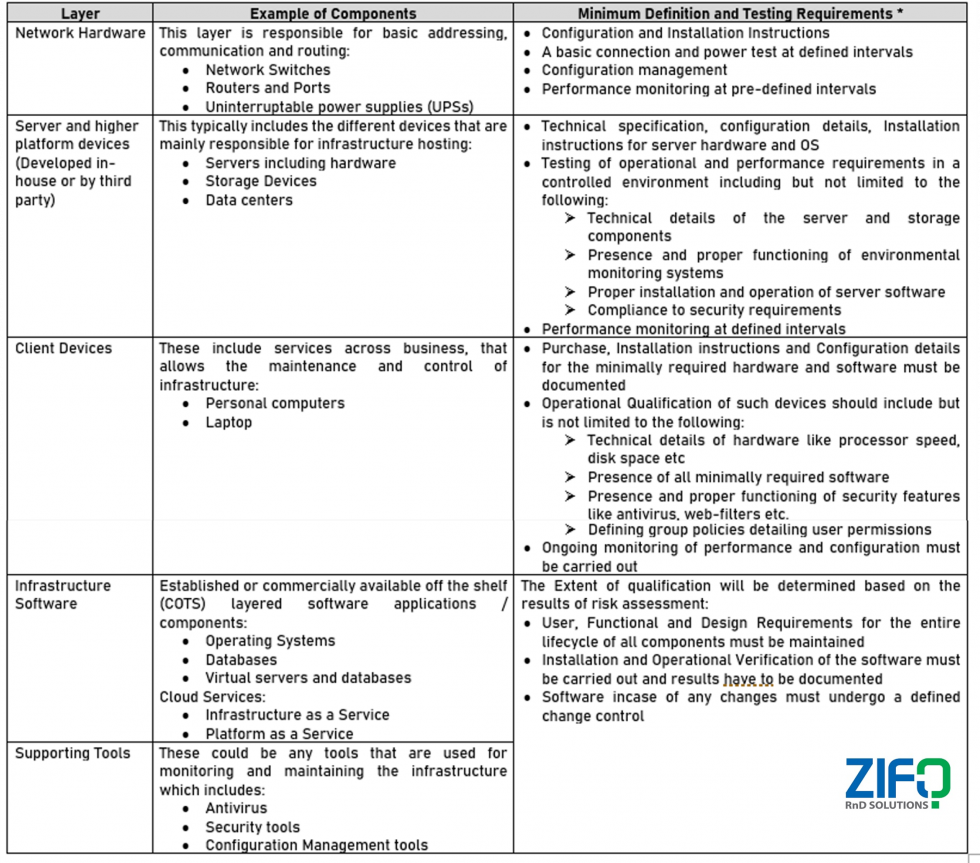
Life science industries generally face several challenges in adopting to the technological advances considering the regulatory impacts and tedious processes involved. But with the alluring benefits provided by cloud based solutions and the need to globalize R&D, moving to cloud has become the “New Normal”. Though adoption of cloud, means the vendor would qualify, maintain and administer the services, it does not spare the end user from their ultimate responsibility to ensure that the applications in cloud are validated and comply with the regulations, in which in turn is complete only with the qualification of underlying infrastructure.
Wondering how to formulate an approach to qualify cloud infrastructure? Here it is:

- Vendor Assessment:
- Determine Qualification Scope and Infrastructure Layer
- Perform Risk Assessment
Let us consider a server for instance, the results of risk assessment would be as follows:

- Qualification Deliverables
- The qualification deliverables required in general include the following:
Plan Qualification Activities and level of qualification
Considering the components in scope, layer to which they belong to, the results of the risk assessment and reliability of the supplier, a qualification plan must be formulated detailing the level of qualification required followed by the creation of qualification deliverables.
Infrastructure Layers

Here is a comprehensive checklist listing down the points to be verified when qualifying cloud infrastructure, and qualify any solution of your choice with it!
Confused about which deliverable is applicable for which infrastructure layer, who should take responsibility for which activities? Don’t worry, we’ve got it covered for you!
Take a quick glance at these helpers-
Deliverables Matrix for Infrastructure Layers
RACI Matrix for Qualification Activities and Deliverables


